How to Make a Small Room Look Bigger with a Rug or Carpet: Ultimate Guide
This post may contain affiliate links which means I may receive commissions from purchases made through these links. These affiliate links come from companies such as Amazon. Learn more on my privacy policy page.
Small-home living is quite common. Whether by choice or necessity, many of us live in compact living spaces. We want to enhance the space and make a small room look bigger and more spacious.
An easy way to create the illusion of additional space is by using a rug or carpet to make a small room look bigger.

Those of us living in an apartment, condo, or small house, know the importance of space. It seems the less space you have, the more you value it. When adding square footage is not an option, you have to get creative and utilize some basic interior design tricks to enlarge a small space.
Benefits of Using Area Rugs and Carpets for Small Spaces
Along with making a small room look bigger, rugs provide additional design benefits to your home. These visually pleasing pieces of decor also offer the following.

- Warmth – Rugs can provide insulation when used on hard floors, making your living space feel warmer than those with no rugs.
- Sound Absorption – Loud noises and echoes can happen even in a small space. Rugs absorb sound and make small rooms feel quieter.
- Comfort – Additional softness on the floor helps to add comfort to a home. This is particularly true in the kitchen where homeowners and guests are often on their feet.
- Cozy Ambiance – Adding extra texture to a room adds to its coziness and the right rug makes it feel inviting and intimate.
How Does a Carpet or A Rug Make A Small Room Look Bigger?
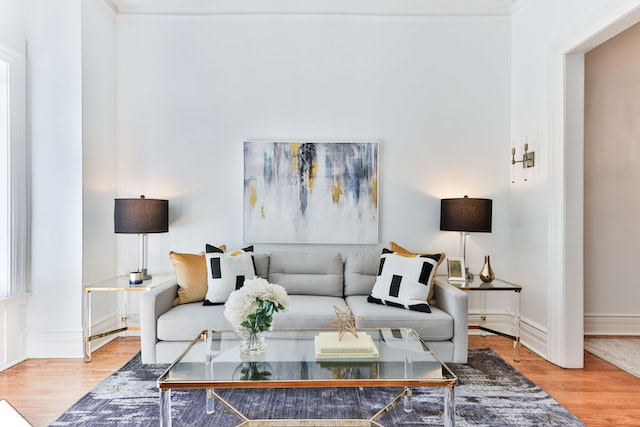
Using carpet or a rug, particularly one that is the right size for your small space, can help broaden the look of the room and make it appear larger. Having a carpet that extends wall to wall can make a small room look bigger because there are no visual stops for your eye.
Using an area rug to accent the layout of your well-placed furniture also allows your eyes to flow naturally through the space and creates an illusion of a much larger living space.
Whether using an area rug over hardwood floors or wall-to-wall carpet, these guidelines will help you choose the right option to make a space look bigger.
Color
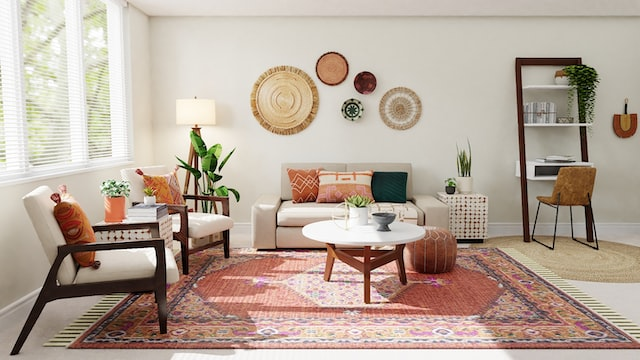
When choosing a color for an area rug or carpet, a lighter hue is preferred for small spaces. Lighter colors reflect the natural light of the room and give the space an airy and light feel, making it appear larger to the eye. Darker colors, while adding gorgeous color, tend to absorb light and can create a small room feel.
Consider foot traffic and use and select a light tone that fits your needs. If the room is well-lived in, opt for a darker beige hue or some medium shades. If the room gets less use, you could consider a cream or light color to maximize the reflection of natural light, giving the optical illusion of more space.
Pattern

While patterns can add visual interest to a room, they can also draw too much attention and make an area feel small. Wall-to-wall carpet tends to create a more spacious look when it is solid in color and has little to no pattern.
You absolutely don’t need to shy away from patterns in an area rug, but the key is to find a pattern that best fits your space. Small spaces benefit from using smaller pattern styles, but if your space has minimal furniture, larger prints can also work well.
Texture
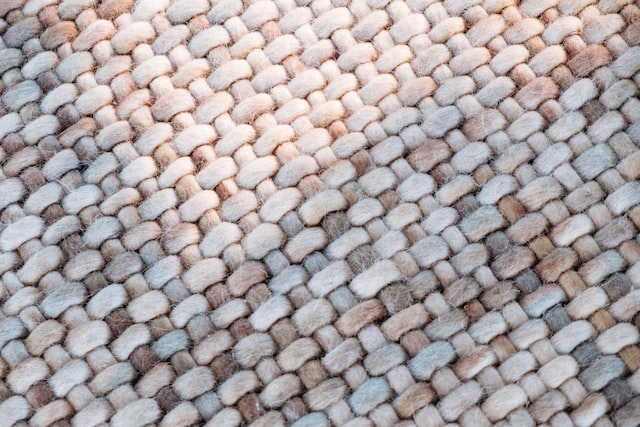
The texture of the rug is important. We most often consider the length of the fibers making up the rug, which is known as the pile. A low-pile rug has shorter fibers or loops, giving it a tighter, flat texture. A high-pile rug is more textured and gives a shag-like look to the rug or carpet.
In general, the lower the pile, the larger your small room will look. This is not a hard rule and you’ll need to consider your specific space, but usually, a lower-pile rug with less texture will give a room a more spacious look.
Rug Size
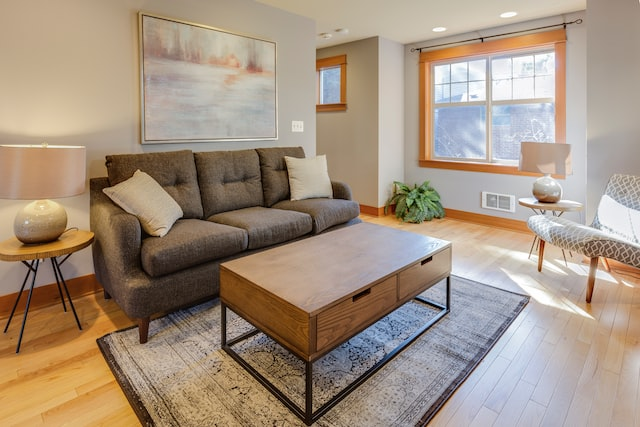
The size of an area rug will depend on the exact size of your room’s floor space and your furniture placement. For the best results, all of your furniture should be sitting on the carpet, without looking cramped. If that isn’t entirely possible, having just the front legs and the majority of the furniture piece on the rug will suffice.
The rug should be large enough to fit all of your furniture, but still small enough that it leaves ample room, at minimum six inches, between the rug edges and your walls.
Finding The Perfect Rug to Make Your Small Room Look Bigger

If you are selecting an area rug, there are some guidelines to follow to ensure it brightens up your tiny space. Here are a few key pieces of advice based on specific small rooms.
Living Room
The size of your living room rug will depend on where your furniture sits. If your living room is a floating space, be sure that all of your furniture fits on the rug with a few inches to spare. If your couch is against a wall, it’s best that at least the front ½ to ⅓ of the couch sits on the rug but that the coffee table sits entirely on the rug.
Dining Room

A dining room rug should be large enough to fit your table and have about 24 inches of space on all sides so that a pulled-out chair will still fit on the rug. Don’t forget to consider the size of your dining room table if there is an extension or the need for additional seating on a regular basis.
Bedroom
When finding a rug for your small bedroom, select one that comfortably fits under the bed and the nightstands, if you can. If you’re working with a tight budget or a small bedroom that doesn’t allow for that, ensure that at least ⅓ of the foot of the bed base is on a rug. Alternatively, you could use two area rugs on either side of the bed.
Kitchen
Narrow runners fit well in kitchen spaces. Since there usually isn’t standing furniture in a kitchen, the size will depend on the length of your cupboards or the size of your island, if you have one. Try to find a rug that is easy to clean and can withstand a lot of foot traffic and spills.
Patio and Outdoor
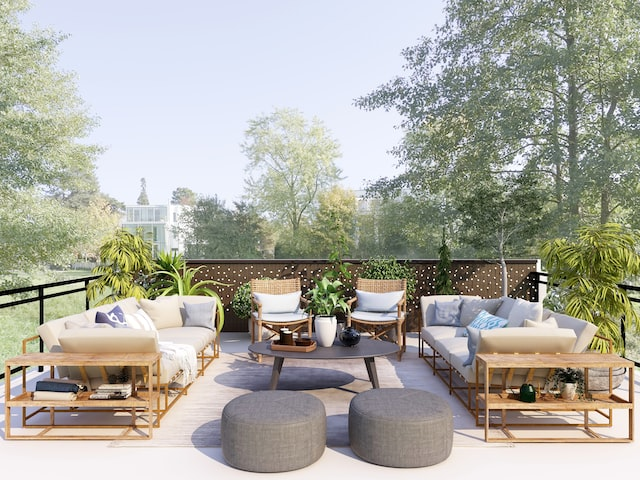
For outdoor rugs, the same rules apply. It will depend on how you use your outdoor space. If it’s set up like a patio dining area, follow the same size guidelines you would for a dining room rug. If your space is set up as a conversational area, keep the living room advice top of mind.
You’ll also want to ensure that the rug you choose is specifically made for outdoor use. Many rugs are indoor and outdoor-friendly but never use an indoor-only rug outside. They are not made to withstand the elements and will need to be replaced very quickly.
How to Shop for Rugs to Maximize a Small Space
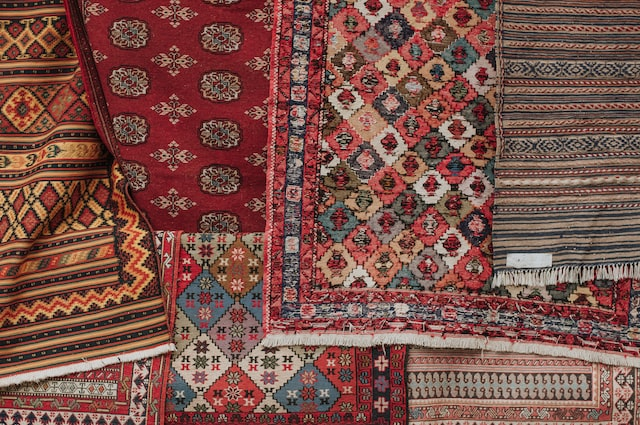
Shopping for the perfect rug can be a challenge. Along with color, pattern, and shape, you have to consider the size and materials in order to pick the right rug for your space.
Measuring for an Area Rug
To ensure you get the correct rug size and make a small room look bigger, measure the entire floor space of your small rooms so you know the maximum size you’re working with. But more importantly, you must measure the space of your current furniture placement.
Follow the rules above, noting how much furniture should be on the rug, and select a common rug size that will allow for that. In general, going a few inches bigger is better if you’re in between rug sizes.
A great way to double-check is to use some masking tape or painter’s tape to create an outline of the rug before making a purchase. This gives you a great sense of the size and placement before you spend any money.
Rug Materials and Quality
Choose your rug material carefully. Certain materials hold up to foot traffic better than others; some are easier to clean.
The best fibers for high-traffic areas are wool, cotton, nylon, polypropylene, and natural fibers like jute. But even choosing one of these materials has its own considerations.
Jute and sisal, for example, are extremely durable, but they are hard to clean and can be uncomfortable on bare feet. Be thoughtful and purchase a rug that fits your own personal needs and comfort levels.
Tips For Using Rugs Over Carpet
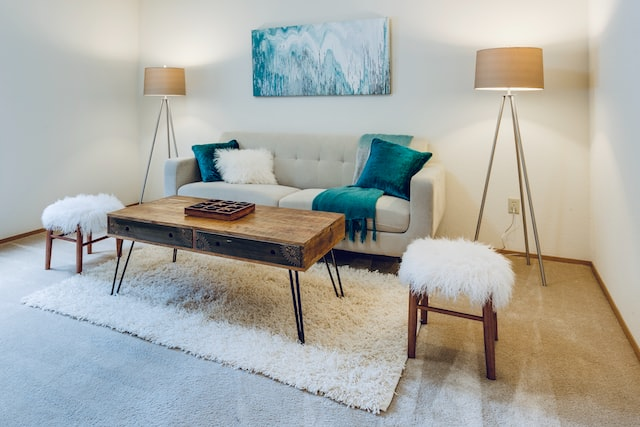
If you have wall-to-wall installed carpet, commonly referred to as broadloom, you can still reap the benefits of an area rug to make a small room look bigger. Follow the same rules for using a rug over hardwood or tile. Also, take the broadloom’s color and pile into consideration and make sure the rug you choose coordinates with the overall carpet color and texture. Choosing a light color and shorter pile will help a room feel larger.
Rug Care and Cleaning Tips

Once you’ve found the perfect rug for your tiny space, maintenance and care are of the utmost importance. After spending so much time to make the right decision, the last thing you want is for a rug to last just a few months before you need to replace it. Here are some tips for cleaning area rugs and carpets in your home.
Clean For Your Specific Pile
Whether cleaning wall-to-wall carpet or an area rug, it’s important to take the pile into consideration.
Cleaning High-Pile Rugs and Carpet
The best way to start cleaning a rug with high-pile fibers is to shake the dirt out. If it is too large, use a vacuum with the upholstery setting. This removes quite a bit of dirt, dust, and debris with very little effort.
For stains, check the care tag for your specific rug, but most stains can be removed with dish detergent and a little water. Spot cleaning is great for maintaining the look of your shaggy carpet or rug, but for high-traffic areas, it is also a great idea to have it professionally cleaned at least once per year.
Cleaning Low-Pile Rugs and Carpet
Low-pile rugs and carpets are conveniently easy to clean with a vacuum on the carpet setting. For tough stains, purchase or rent a carpet cleaner big enough to tackle the job. Be sure to test the cleaning solution on an inconspicuous part of the fibers before cleaning the entire carpet.
Invest in a Rug Pad
If you do go with an area rug, you’ll also want to protect your hard floors. A rug pad not only creates a comfortable softness under a rug but also protects your floors from being scratched or damaged.
When selecting a rug pad, select pads that have a non-slip bottom that prevents sliding and scratching. You’ll also select a pad slightly smaller than the rug itself to ensure it stays covered and in place.
Choosing The Right Area Rug For Your Small Space
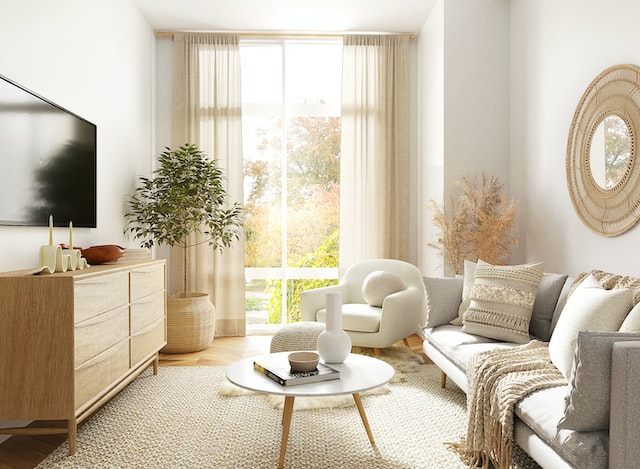
Selecting the perfect carpet or area rug to make a small room look bigger can be daunting, but following a few simple guidelines can help you choose. Pay close attention to your small space and remember that measuring your area is the most important step.
In general, search for light colors with a very subtle pattern or no pattern. These rugs reflect natural light and help a small room look more spacious. Low-pile rugs and carpets are easier to clean and are durable to withstand high-traffic areas.
Following these simple rules will make a small room look bigger and appear to have more space than it actually does.




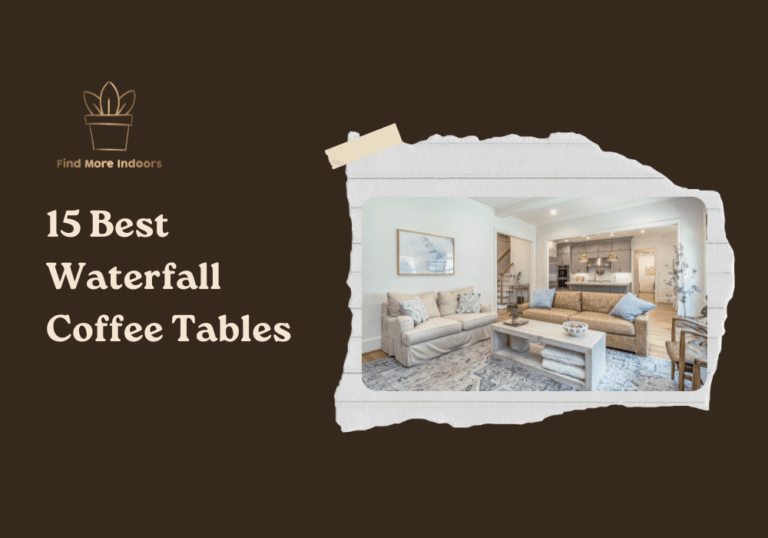


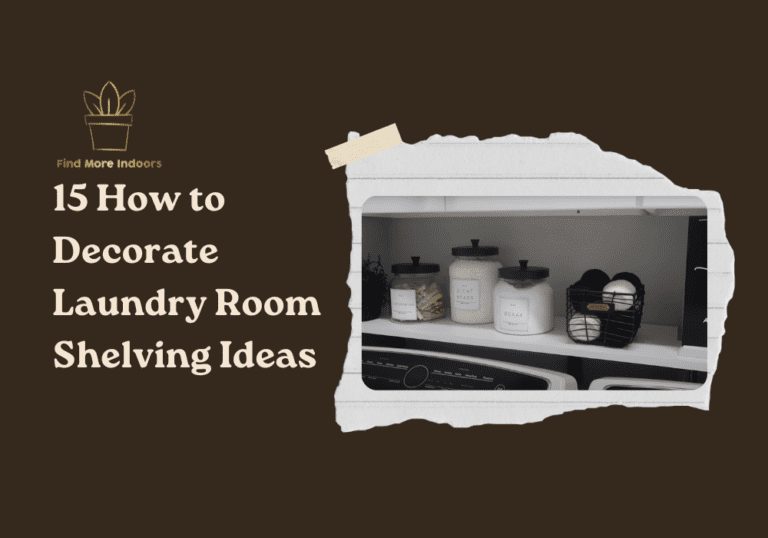
One Comment
Comments are closed.